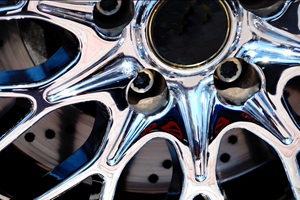How to Reduce Heat Gain in a Building with a Powder Coating Operation
Q. We get an enormous amount of heat in our building when our powder system is running. In the summer months, the building is almost unbearable. How can we reduce heat gain from our equipment?
Q. We run a powder system with a five-stage iron phosphate washer and dry-off oven, two powder booths and a convection cure oven. We get an enormous amount of heat in our building when the system is running. In the summer months, the building is almost unbearable. How can we reduce heat gain from our equipment?
A. Let’s start by identifying the sources of heat gain in a building with a powder system. The washer usually has at least one heated zone that acts like a radiator and heats the rest of the washer and the surrounding area. The ovens can add to the heat gain by loss of heat at the seams and roll-out at the entrances and exits. Parts get heated in the washer and ovens and drag that heat out into the building.
Avoiding excess heat gain starts at the design stage. Look at products in the washer that need little or no heat. Low temperature cleaners and no-heat conversion coatings are helpful. Insulation of the heated stages in the washer can be added to an existing system. Some washers have insulated tunnels, a proven energy and heat saver strategy.
The next target is the biggest heat generator: the ovens. Six inches of insulation is a good investment. Make sure heat losses at the seams or exposed ductwork are minimal. The openings on a horizontal entry/exit oven are the biggest source of heat loss. Roll-out adds heat and also wastes energy. Other options include extended vestibules, heat-relief hoods and powered air curtains.
The most obvious benefit on the oven entrance is to create some space between the heated zone and the building by extending the vestibule. A short vestibule with a large product opening will lose a lot of heat. The longer vestibule helps to separate the hot oven zone from the building by mixing hot air with cool air inside the vestibule where it can be pulled back into the oven and recirculated. It costs little but does require space, a difficult thing to spare.
A heat-relief hood can be used to move heat roll-out from the building. A canopy around the sides and top of the oven opening helps contain the heat and a stack is used to create a natural updraft and carry the heat from the building. This is particularly useful at the entrance of the cure oven where a powdered air curtain is not a good idea. An air curtain needs high velocity (2,000 - 3,000 FPM), and that is not a good idea when uncured powder is exposed to the air stream. Heat-relief hoods cost much less than an air curtain and can work well. They can also be added to an existing system.
Air curtains are commonly used to contain energy and limit heat gain. Air is forced across the entry at high velocity, fired horizontally or vertically, depending on the size of the opening. The air curtain will typically reduce heat loss and make it easier to balance oven temperature. Unlike a longer vestibule, they do not require a lot of space.
Often overlooked, the air curtain is most effective when the opening is small. The air velocity needed is high, and it is difficult to sustain it over distance. It is not very effective if its opening is greater than 4 × 5 ft. Second, the air curtain typically uses at least a 10-hp motor, often much larger, which adds cost to the operation and offsets the gas savings. Finally, when parts are present in the opening, the air velocity hits the parts and can actually cause more roll-out, not less.
An air curtain should be evaluated to see if cost savings for gas offsets the electrical cost for the motor and if it makes sense compared with other options. The most effective and low-cost heat containment strategy is an extended vestibule.
Originally published in the May 2017 issue.
Related Content
A Chromium Plating Overview
An overview of decorative and hard chromium electroplating processes.
Read MoreAlkaline Cleaning Guide
Gregg Sanko, Senior Chemist, Oakite Products, Inc. provides an overview of the alkaline cleaning process.
Read MoreHow to Choose Between Sulfate and Chloride-Based Trivalent Chromium
There are several factors to consider when choosing between sulfate and chloride-based baths for trivalent chromium plating. Mark Schario of Columbia Chemical discusses the differences and what platers should keep in mind when evaluating options.
Read MoreRead Next
Episode 45: An Interview with Chandler Mancuso, MacDermid Envio Solutions
Chandler Mancuso, technical director with MacDermid Envio discusses updating your wastewater treatment system and implementing materials recycling solutions to increase efficiencies, control costs and reduce environmental impact.
Read MoreEducation Bringing Cleaning to Machining
Debuting new speakers and cleaning technology content during this half-day workshop co-located with IMTS 2024.
Read MoreDelivering Increased Benefits to Greenhouse Films
Baystar's Borstar technology is helping customers deliver better, more reliable production methods to greenhouse agriculture.
Read More


























